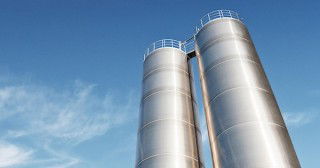As hybrid cars are slowly conquering the streets worldwide, proving that a mix of alternative energies is the key to future flexibility and mobility, industrial processes are becoming increasingly atuned to the benefits of using a range of alternative fuels. The utilisation of such fuels frees cement producers from their dependency on price fluctuations in the global energy markets as well as improving their environmental record. By FLSmidth Pfister, Germany.
The greatest challenge in dosing alternative fuels is their diversity. Particle size, density and water content are never the same. Refuse-derived fuels (RDF) are fluffy, fibrous or compressible, biomass or sewage sludge may contain additional moisture while others, such as bone meal, are powderous, requiring appropriate distribution management. Locally-available materials range from wood dust in Scandinavia to dried sewage sludge and biomass in Egypt or tyre chips and landfill-materials in other parts of the world.
